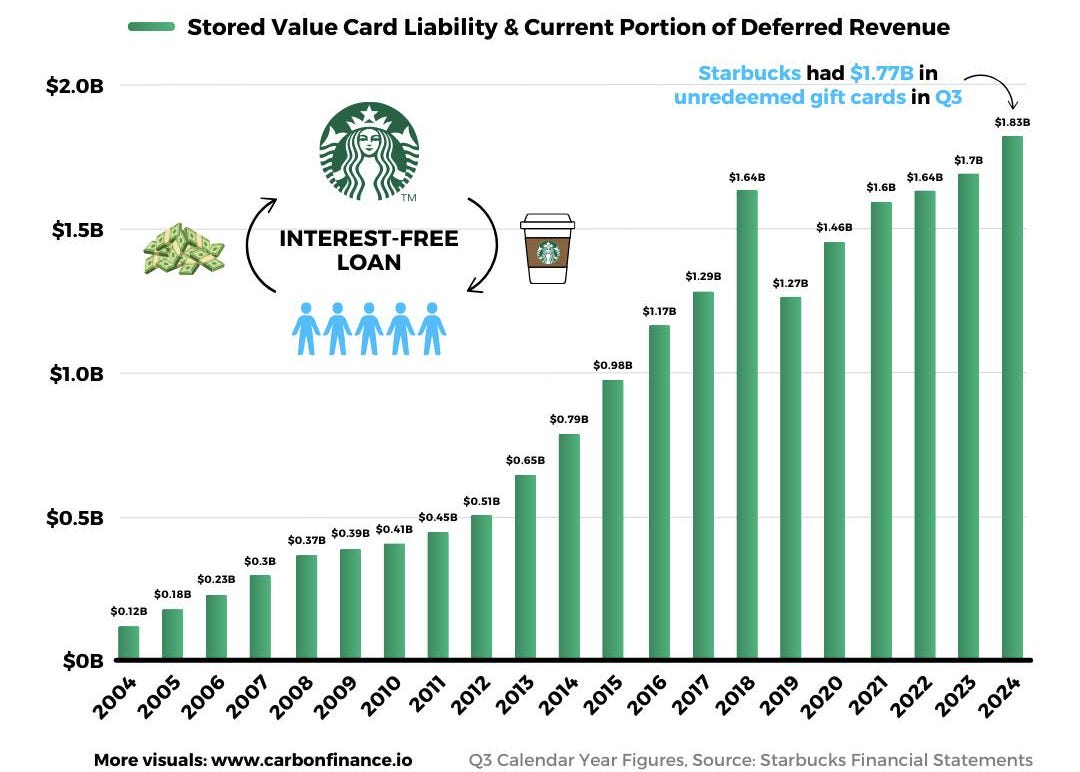How Starbucks turned spare change into a fortune
A story, quote, and lesson about finding value where no one’s looking
It started as a simple convenience.
A gift card here, a mobile app there. A way for customers to skip the line and make coffee runs smoother. But over time, Starbucks discovered that those little balances sitting untouched in customer accounts were more than just convenience. They were cash.
By 2024, Starbucks reported holding almost two billion dollars in outstanding stored-value cards and app balances: money already paid by customers, yet not yet spent.
These balances can’t be withdrawn, don’t collect interest, and in many cases, go unused for months (or forever). For Starbucks, that means an interest-free loan from millions of people around the world, one latte at a time.

The company can use this pool of prepaid funds to invest, expand, or manage operations, all without borrowing a cent. What started as a customer loyalty program quietly evolved into a powerful financial instrument, turning everyday transactions into a long-term funding source.
It’s a bit ironic: Starbucks didn’t set out to build a bank, yet it stumbled into one of the most creative financial advantages in modern retail.
“The company can treat this money as a 0% interest loan, and with about 10% of funds eventually being forgotten, it’s actually a negative interest loan.”
- Connor Tabarrok, online journalist and writer focusing on the Starbucks case.
The beauty of the idea isn’t in its complexity, it’s in its perspective. Where others saw a cup of coffee, Starbucks saw a cycle of trust and habit that could be optimized, monetized, and reinvested. It wasn’t a financial institution that came up with this model. It was a coffee company. And that’s the lesson.
Innovation doesn’t always come from the most obvious places. Sometimes, the best ideas emerge when you’re not even looking for them, when you’re too busy trying to solve something else.
Starbucks didn’t invent interest-free loans. They just noticed that people were willing to front them cash for future purchases, and then built systems around that truth.
In life, too, value often hides in plain sight. Maybe in your work, your hobbies, or your relationships, there’s untapped potential, something small that could become transformative if viewed through a different lens.
So now I ask you:
Where in your own life might there be hidden value, something ordinary that, with a shift in perspective, could become extraordinary?


